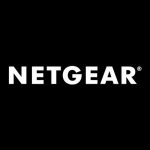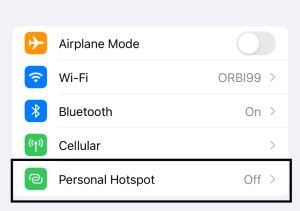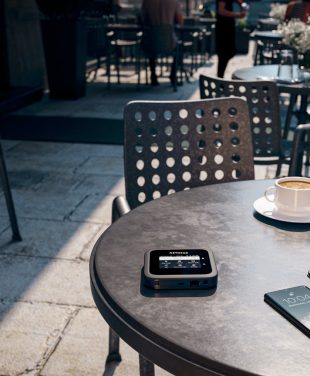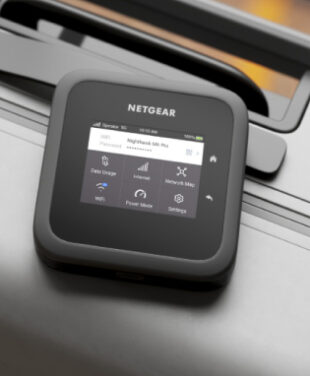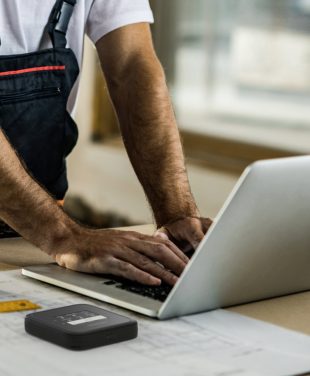We all depend on the internet for work and play, but it can be more difficult when travelling for business or pleasure. Options while on the road include tethering your mobile phone to public WiFi hotspots in cafes, trains and hotel foyers, or with a dedicated mobile hotspot router. Read on to find out which is the best option for you.
IN THIS ARTICLE
Connecting to the Internet When Away From Home
In today’s connected world, it’s understandable to feel a little lost when disconnected from family, friends, or colleagues back at home. After all, wherever you are you can always find a local coffee shop with a WiFi hotspot or seek a space with phone reception. These options seem good in theory, that is until you encounter patchy WiFi connections, expensive mobile data rates, a lack of privacy, or the possibility of compromised security with public WiFi.
Most of us would prefer a dedicated personal 4G LTE or 5G WiFi hotspot device that can connect from the comfort of our motorhome, hotel, caravan, boat, or even a tent in the wilderness. If you are someone who travels for business or pleasure, the internet is something you won’t be able to do without, and a portable WiFi connection is the solution. Let’s take a look at the advantages of dedicated mobile hotspots vs phone tethering WiFi connections.
Internet WiFi Phone Tethering
Phone tethering is a simple way to connect to the internet when you’re on the road or out and about. If your phone plan comes with hotspot data, you can switch on your phone’s hotspot and use it for WiFi connections. There are no special cables or tech knowledge required. Simply switch on the hotspot on your Apple iPhone or Samsung Galaxy Android mobile phone and connect your laptop or other device wirelessly to the WiFi network.
On the downside, the WiFi antennas in mobile phones are very small and provide limited range and is only viable in areas where there is strong signal coverage for a stable connection. Plus, it won’t be worth attempting to stream movies or perform other data-hungry tasks. In addition, mobile phone battery capacity is quite small, and the battery will quickly drain when used as a hotspot. It will be best to keep your phone plugged into a power outlet while you are connected to the internet or limit usage to a short duration.
Phone tethering is ideal if you only need occasional web access to a single device such as a laptop Mac or iPad. It can be a good option for people who stay in populated areas where phone WiFi reception is strong. However, you may struggle to get a good connection if you are travelling further afield. In this case, dedicated portable WiFi router is the better option.
How Does Tethering Work?
Phone tethering means making a ‘tether’ from your phone to a separate internet-enabled device. you will then use mobile data to set up and use the internet connection. You can tether devices using Bluetooth, a USB cable, or a WiFi signal. Here is how tethering works.
Your phone receives data from a mobile tower.
The phone’s hotspot uses that data to set up an internet signal.
Your device picks up the internet through a USB cable, Bluetooth tethering, or a WiFi signal.
Internet access commences when you select the WiFi account and enter the password.
Portable Mobile Hotspot Router
A portable router is a mobile hotspot device that allows you to create a portable WiFi network wherever you are, as long as the device can pick up a mobile signal. Portable hotspots can be used at home, on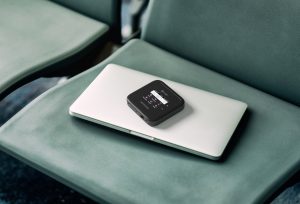 the road, and even internationally if they are unlocked, such as a NETGEAR Nighthawk M6 Pro Hotspot. These hotspots can be plugged into a regular power socket or a 12-volt socket in a car, boat, or motorhome.
the road, and even internationally if they are unlocked, such as a NETGEAR Nighthawk M6 Pro Hotspot. These hotspots can be plugged into a regular power socket or a 12-volt socket in a car, boat, or motorhome.
Dedicated 5G or 4G LTE mobile hotspot devices have more powerful antennas than those in mobile phones, allowing them to capture WiFi signals from much further away. A portable router will provide a faster and more stable internet connection than a tethered phone mobile hotspot. This is ideal if you’re visiting more remote regions or areas where WiFi reception is impeded by the landscape or buildings. A powerful mobile hotspot can also handle data-hungry applications such as video streaming, gaming consoles, and multi-user conferencing.
Portable WiFi routers come with ethernet ports for use with dedicated devices where a stronger and more reliable connection is needed. If you are travelling in a motorhome, boating, or staying in a holiday rental, you will only need to set the device up once using your hotspot password, and your devices will automatically connect whenever they are needed. When it comes to signal quality and the overall user experience, a personal mobile hotspot is the clear winner.
How Do Mobile Hotspots Work?
In some ways, a mobile hotspot is the same as a tethered phone hotspot. It lets you establish a WiFi connection for laptops, tablets, and other devices using mobile data. However, mobile hotspots can do a lot more than phone hotspots can. NETGEAR Nighthawk portable mobile hotspot routers can connect to 30+ devices simultaneously. They also include guest networks and come with encrypted security features. These newer 5G hotspots use the latest WiFi 6/6E standards that make it a breeze to support a large number of network devices. Here’s how a mobile hotspot works.
The hotspot grabs data from a cellular tower.
The hotspot uses that data to set up and configure the WiFi signal connection.
Your devices pick up the WiFi signal from the hotspot.
You select the account and enter the WiFi password to access the WiFi network.
Using a mobile hotspot is just as straightforward as using your phone. You will need a SIM card and can have the option for a capped data plan or unlimited data. In addition, the best mobile hotspots can be unlocked for use in 125 countries, with various service providers to choose from. Your investment in a mobile hotspot device will give you more data, greater WiFi range, more flexibility, and the ability to keep in touch with family and friends from wherever your travels take you.
Mobile Phone Tethering Data Use and Cost
 Working online with phone tethering can quickly chew through data and become expensive. Mobile phones such as Apple iPhones and Android phones often have lower data limits than home internet WiFi plans and personal mobile hotspot plans. Phone tethering WiFi charges generally increase for every gigabit of data used above your data cap. Plus, unlike dedicated mobile hotspots, phone tethering will only allow you to connect to a single device at any one time.
Working online with phone tethering can quickly chew through data and become expensive. Mobile phones such as Apple iPhones and Android phones often have lower data limits than home internet WiFi plans and personal mobile hotspot plans. Phone tethering WiFi charges generally increase for every gigabit of data used above your data cap. Plus, unlike dedicated mobile hotspots, phone tethering will only allow you to connect to a single device at any one time.
Phone tethering can handle activities such as checking emails, catching up on news, or retrieving documents. But activities such as streaming, video downloads, or gaming will use up your data fast and your phone bill will skyrocket. It’s important to fully understand your phone plan, even if you are on an ‘unlimited’ option. Most unlimited data plans still have a data cap, but rather than cutting off the service when you reach the cap, your data speeds will slow down.
In addition, not all mobile carriers offer tethering by default. You may need to pay more to upgrade your plan to include tethering. In summary, using your mobile phone as a hotspot is fine for writing occasional emails, but it likely won’t handle regular Zoom calls, video downloads, or high-definition online activities.
Portable Mobile Hotspot Data Use and Cost
With a dedicated Nighthawk 5G portable WiFi router hotspot, the world is at your fingertips. You can watch Netflix or Amazon Prime, enjoy multi-player gaming, conference with colleagues on a virtual private network (VPN), or even enter into virtual reality immersion. Dedicated mobile hotspots have higher data limits and the ability to reach Gbps speeds for a price comparable to a home internet broadband plan. The choice is yours, without data cap stress.
These plug-and-play devices are perfect for family trips, as they act like a regular home WiFi and allow others to connect to the internet concurrently. NETGEAR Nighthawk M6 and M6 Pro mobile hotspots are all-in-one solutions to keep everyone happy. You can connect to tablets, laptops, android devices, smart TVs, and more from a single mobile hotspot, and save on data costs.
Considerations Before Buying a Mobile Hotspot Device
If you are planning on buying a WiFi hotspot device, there are a few things to consider before you purchase, including:
Wireless Carrier Limitations:
Choose a provider with the best available coverage for the right data plan price. Some data plans come with monthly caps that limit your usage, while others offer unlimited data but will cap your internet speeds after a certain point. By being aware of these limitations, you will be able to choose a carrier plan that suits your needs. Make sure to read the fine print of your data plan, particularly if you like to engage in data-hungry online activities.
Wireless Network Availability:
Although portable WiFi is powerful, it does have its limitations. For example, remote areas often suffer from sparse network coverage, making it difficult to establish a stable internet connection. Check your carrier’s network availability map to determine whether you can get adequate coverage. Although limited network availability can be a problem in developing countries, many providers offer almost complete nationwide coverage.
Battery Life:
To ensure the mobile hotspot meets all your needs, you need to choose one with a long-lasting battery. Nighthawk hotspots, for example, can run continuously for up to 13 hours. Other WiFi hotspots may be small and sleek but have a much shorter battery life. Plus, the more devices you have connected, the more your battery will be drained. It’s a good idea to carry a spare battery to ensure your essential WiFi-enabled devices can remain connected whenever required.
4G/5G capabilities:
The capabilities of mobile WiFi hotspot devices vary. Some devices can handle 5G connections, while others are only compatible with 4G. These differences can also help you determine the most suitable data plan for you. Cheaper WiFi hotspots can be limited to just 4G networks. These devices are good enough for some tasks but will fall short when you require blazing-fast 5G connection speeds. If you invest in a NETGEAR 5G hotspot device, you can enjoy the fastest available speeds for all connected devices on your mobile network. This type of wireless technology is more reliable and can connect to multiple devices simultaneously. Nighthawk mobile hotspots offer capabilities on par with the best home broadband internet plans.
The Number of WiFi Devices You Want to Connect:
Some WiFi hotspots can handle connecting at least five devices at once, but higher-end models can handle ten or more at a time. NETGEAR Nighthawk Mobile Hotspots can connect to 30+. The online landscape is changing fast, and we are all using more devices than ever, so it makes sense to choose a mobile hotspot that will future-proof your virtual private network by offering the battery power and bandwidth to ensure a fast and stable connection. The best 5G mobile hotspots can handle multiple devices running concurrently without a noticeable loss of data speeds.
Connectivity Everywhere you go
As the world leader in all things WiFi, NETGEAR remains the number one brand for internet users who want to stay one step ahead of the competition. NETGEAR Nighthawk M6 and M6 Pro Mobile Hotspots are changing the way we network, one device at a time.

